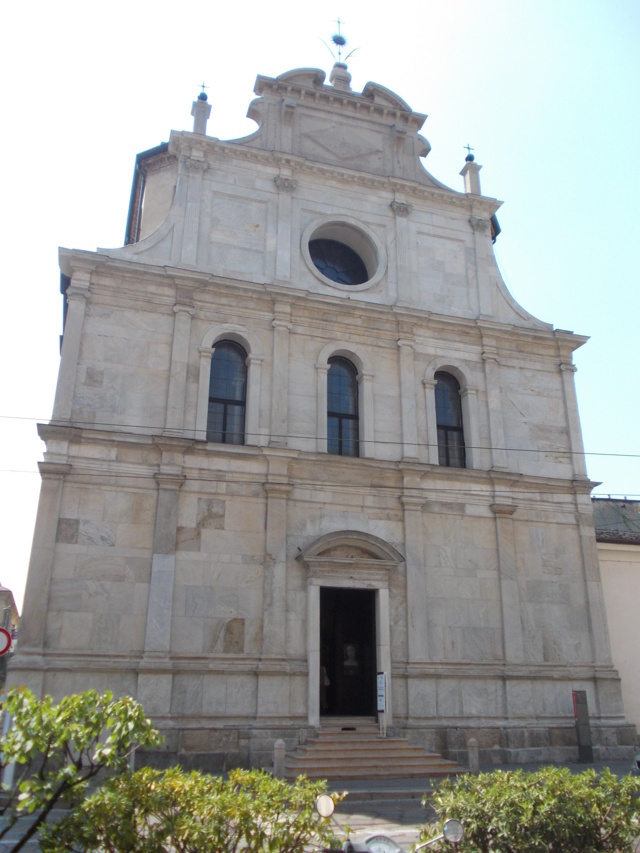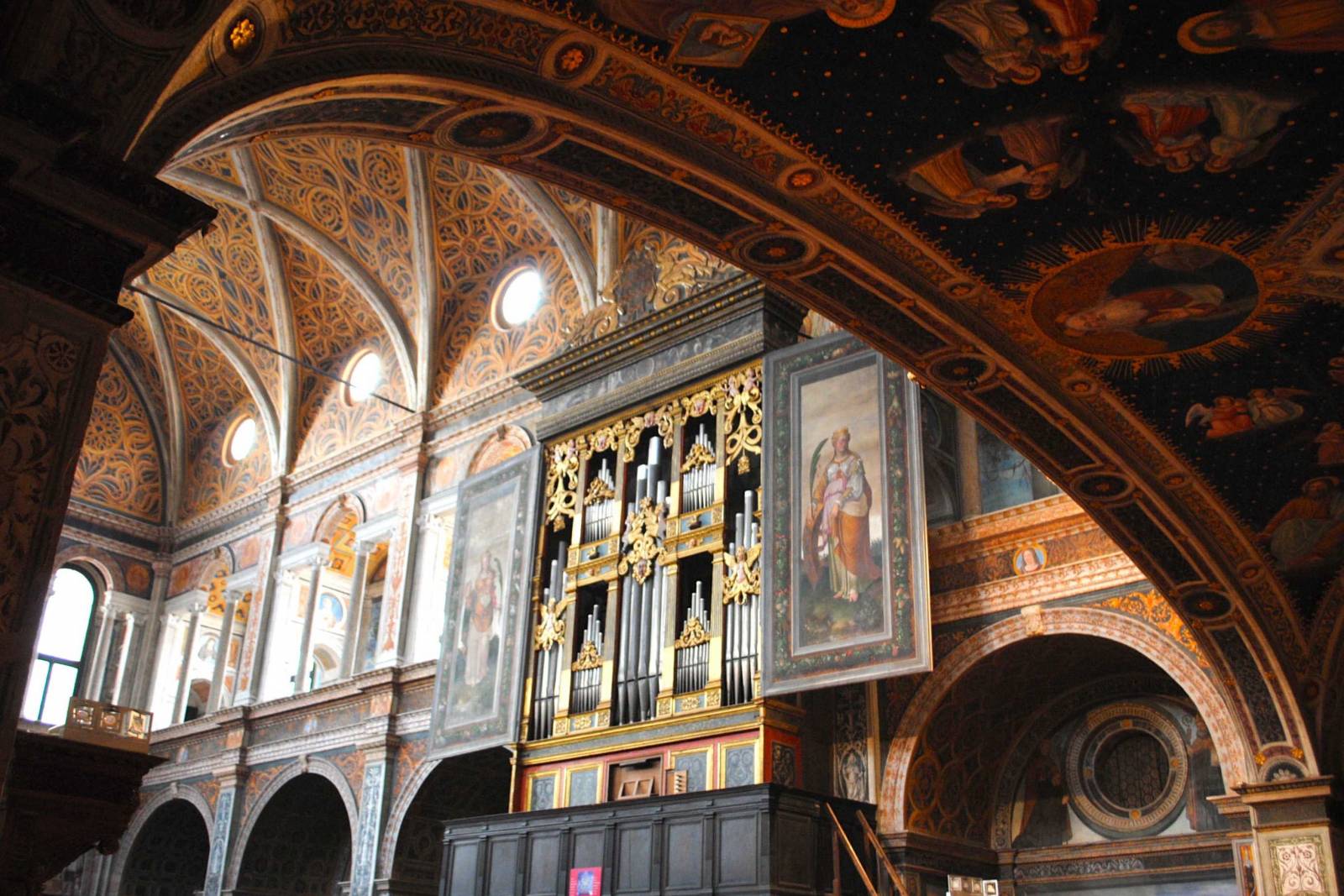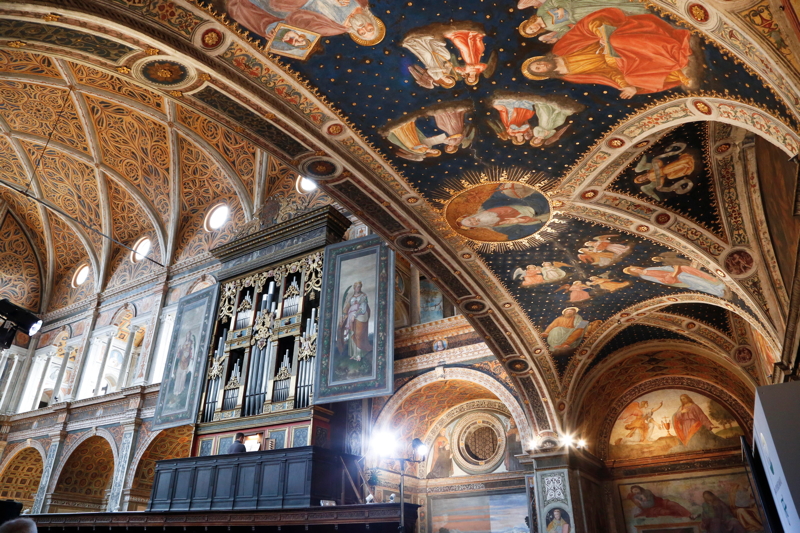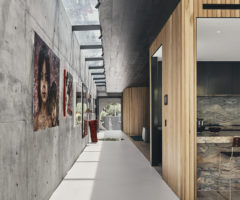Corso Magenta, una facciata anonima in pietra grigia ed un cartello, San Maurizio al Monastero Maggiore. Sembra una delle tante chiese sparse nel territorio cittadino. Invece entrate e rimanete con i fiato sospeso. Un tripudio di colori e forme vi avvolgono e, per un istante, pensate di essere stati trasportati in uno di quei capolavori tanto noti ai fiorentini o ai romani. Invece no, siete a Milano, in una delle più belle chiese della città, da pochi anni restituita al suo antico splendore. Un antico luogo di culto, forse di origine longobarda, viene sostituito dal grande Monastero delle monache benedettine, di cui oggi, oltre alla splendida San Maurizio, rimangono porzioni dei chiostri, integrati nel Civico Museo Archeologico. L’interno di San Maurizio è quasi sfarzoso e comprende preziosi affreschi di Bernardino Luini, il grande pittore cinquecentesco, e dei suoi figli. Non possiamo che invitarvi a visitare questo gioiello e a godere della bellezza del luogo.
Corso Magenta, an anonymous gray stone facade and a the sign indicating San Maurizio al Monastero Maggiore. It looks like one of the many churches scattered throughout the city area, but if you walk in you will be taken back by the beauty of the environment. A riot of colors and shapes will envelop you and, for a moment, you will think you have been transported to one of those masterpieces in Florence or Rome. But no, you are in Milan, in one of the most beautiful churches in the city, returned to its former glory. An ancient place of worship, perhaps of Lombard origin, is replaced by the great monastery of the Benedictine nuns, which today, in addition to the beautiful San Maurizio, portions of the cloisters of which are housed in the Civic Archaeological Museum. The interior of St. Maurizio is opulent and includes valuable frescoes by Bernardino Luini, the great sixteenth century painter, and his sons. We can only invite you to visit this gem and enjoy the beauty of the place.
Corso Magenta, 15, Milano
Tel. 02 85561














